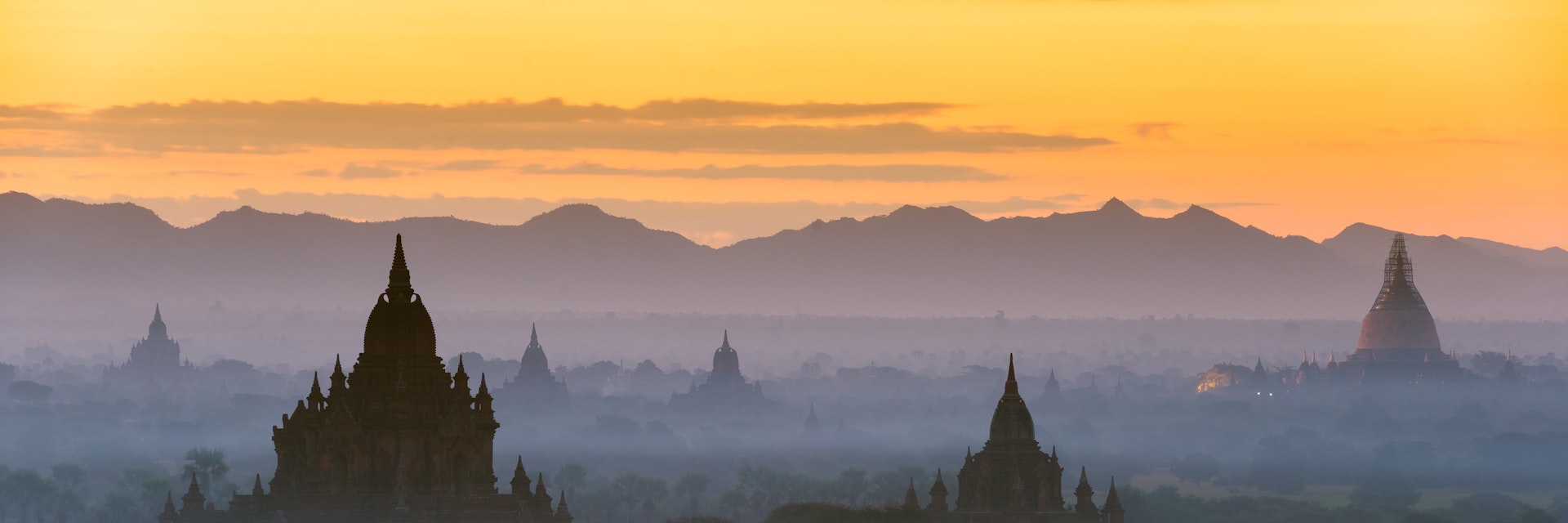Set atop a hill in the town centre, the stunning Shwesandaw Paya (and the surrounding pagodas and monasteries) is not only Pyay’s major point of interest, but also one of the country’s biggest Buddhist pilgrimage sites. Just over 3ft taller than the main zedi (stupa) at Yangon’s Shwedagon, the Shwesandaw stupa follows the classic Burmese design seen at Bagan’s Shwezigon. Highly atmospheric and bustling with locals and pilgrims at dawn and dusk, it's one of Myanmar's most interesting paya.
Legend goes that it was built in 589 BC, and that the golden zedi houses four strands of the Buddha’s hair (the Golden Hair Relics). Atop the zedi are two hti (umbrella-like pinnacles), unusual for Myanmar. The lower, bigger one dates from Pyay’s days as a Mon city. The higher, smaller one was added by King Alaungpaya as a symbol of peace between his realm and the Mon, after brutally capturing the city in 1754. In the southwest corner of the complex, the Sacred Tooth Hall is said to house an original tooth from the Buddha. It’s in the golden bell (locked) behind the glass. The locks come off once a year for the November full-moon festivities.
The panoramic views from the pagoda are great too. To the east, you’ll see the Sehtatgyi Paya, a giant (maybe not 10 storeys, though) seated buddha, eye-to-eye with the Shwesandaw and watching over it. The smaller gold stupa on the highest hill southeast of Shwesandaw is the Wunchataung Paya, where people can say ‘sorry’ for misdeeds. While they’re at it, they get the best view of Shwesandaw and the mountains across the river. Reach Wunchataung via Sehtatgyi Rd, east of Shwesandaw.
Outside the entrances to the paya, people sell caged songbirds. By making a small donation you can grant them their freedom (at least until they are recaptured!) and gain merit in the process. Elsewhere within and around the complex are palm readers and other fortune tellers, though you'll likely need an interpreter to make any sense of their predictions.

